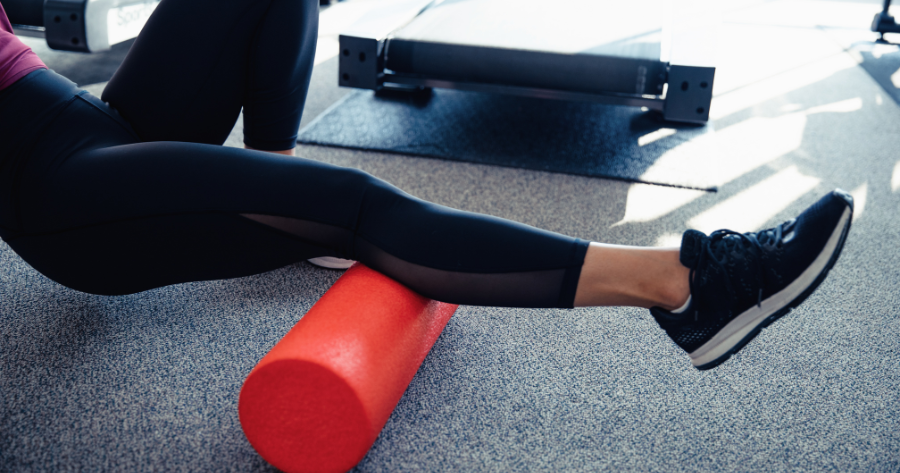Proper form and technique are crucial in injury prevention during physical activity. Whether engaging in sports, fitness training, or simply exercising for overall health, understanding and implementing correct form can significantly reduce the risk of injuries.
This article will delve into the importance of proper form, common form mistakes, techniques for ensuring adequate form, sports-specific considerations, the incorporation of form drills into training, the role of coaching and feedback in form correction, and the progression and adaptation of technique.
Understanding the Importance of Proper Form
Proper form is essential for maximizing performance and minimizing injury risks in physical activity. Proper form refers to the correct alignment and execution of movements, ensuring that the body’s muscles, joints, and bones are appropriately engaged and supported. This allows for more efficient movement, optimal muscle recruitment, and reduced stress on vulnerable body areas.
Maintaining proper form throughout your workouts or training sessions is essential for preventing strains, sprains, and overuse injuries. It helps distribute forces evenly throughout your body, reducing the likelihood of any area becoming overloaded or susceptible to damage.
By paying attention to the subtleties of form, you can also better maintain balance, stability, and control, reducing the risk of falls or accidents.
The Science Behind Proper Form and Injury Prevention
Before we discuss the proper form in detail, let’s consider the science behind it. Our bodies are intricate systems of muscles, joints, and connective tissues working harmoniously. When we engage in physical activity, our muscles contract, and our joints move in specific ways to produce desired movements.
Proper form ensures these movements are executed to optimize efficiency, minimize strain, and reduce unnecessary wear and tear on our bodies. Understanding how different exercises or movements should be performed correctly can ensure our bodies function optimally, preventing short-term and long-term injuries.
Common Form Mistakes and Their Consequences
Even the most experienced athletes or fitness enthusiasts can fall prey to common form mistakes. However, recognizing and rectifying these mistakes is crucial for injury prevention and optimal performance. Let’s take a look at some of the most prevalent form errors and their potential consequences:
- Overarching the back: Many exercises require maintaining a neutral spine position, but excessive back arching can increase strain on the lower back, leading to discomfort and potential injury.
- Collapsing knees inwards: In movements such as squats or lunges, allowing the knees to cave inwards places excessive stress on the knee joint, potentially leading to knee pain or injury.
- Dropping the head forward: During exercises that involve the upper body, such as push-ups or rows, dropping the head forward can strain the neck and upper back, resulting in discomfort or potential muscle imbalances.
- Using momentum instead of muscle control: Swinging or jerking the body during exercises can diminish the movement’s effectiveness and increase the risk of strains or other injuries.
These are just a few standard form mistakes that can have negative repercussions. You must know your body’s alignment and movement patterns to avoid these common pitfalls. By addressing and correcting these errors, you can reap the full benefits of your training while reducing the chance of injuries.
Importance of Correcting Form Mistakes
Correcting from mistakes is about preventing injuries and achieving optimal performance. Specific muscle groups may be underutilized when the form is compromised, while others can become overworked, leading to imbalances and potential muscle strains.
By taking the time to identify and correct these mistakes, you can ensure that your body functions in the most efficient and biomechanically advantageous way. This, in turn, enhances your performance, enabling you to achieve better results, whether it’s increased strength, improved endurance, or better overall fitness.
Techniques for Ensuring Proper Form
Now that we understand the importance of proper form and the consequences of common mistakes, let’s explore some techniques to help ensure you maintain proper form throughout your workouts:
- Start with proper alignment: Ensure your body is aligned correctly before initiating any movement. This includes a neutral spine, stable core, relaxed shoulders, and engaged muscles.
- Focus on muscle engagement: Concentrate on the target muscles and the range of motion required for the exercise. Avoid using momentum or relying on other muscle groups to compensate.
- Use mirrors or video analysis: Utilize visual aids such as mirrors or record your workouts to assess your form visually. This can help identify any deviations from the proper form and make necessary corrections.
- Seek professional guidance: Consider working with a qualified fitness professional or coach who can provide expert guidance and correct any errors specific to your needs or goals.
- Practice form drills: Incorporate specific drills focusing on form and technique into your training routine. These drills help reinforce correct movement patterns and muscle activation.
Remember, proper form is not something to be achieved and forgotten. It requires ongoing attention and practice to develop and maintain. Applying these techniques and continuously honing your form can significantly reduce the risk of injury and enhance your overall performance.
Functional Movements and Proper Form
When considering proper form and injury prevention, it’s essential to acknowledge the role of functional movements. Functional movements mimic natural human movements, such as squatting, pushing, pulling, and rotating. They engage multiple muscle groups simultaneously and are integral to activities of daily living and sports performance.
Ensuring proper form while performing functional movements reduces the risk of injury and enhances skills transfer to real-life activities. Focusing on maintaining alignment and coordinated movement patterns during functional exercises can improve overall movement efficiency and resilience.
Sports-Specific Form Considerations
Every sport has its unique movement patterns and requirements. Understanding and implementing sports-specific form considerations can maximize performance and reduce the risk of sport-specific injuries. Here are a few key points to consider:
- Ergonomics: Ensure that your body mechanics align with the characteristics of the sport you’re playing. This includes understanding how to position your body relative to equipment, opponents, or the playing surface.
- Technique variations: Different sports may require specific techniques to achieve optimal performance and prevent injuries. Familiarize yourself with these variations and work on executing them correctly.
- Balance and stability: Many sports require dynamic balance and strength. Incorporate exercises and drills that improve your stability while moving in different directions or on unstable surfaces.
By paying attention to the specific movement requirements of your sport and addressing the corresponding form considerations, you can optimize your performance and minimize the risk of sports-related injuries.
Incorporating Form Drills into Training
Form drills are exercises designed to develop and reinforce proper form and technique. They provide an opportunity to fine-tune movement patterns, enhance neuromuscular coordination, and improve muscle activation. Here are a few examples of form drills you can incorporate into your training:
- Slow-motion repetitions: Perform exercises at a slower pace, focusing on every aspect of the movement, from initiation to completion. This allows you to be more mindful of your form and make any necessary adjustments.
- Isometric holds: Pause at various points during an exercise and hold the position to ensure proper alignment and muscle engagement. Isometric holds help strengthen weaker muscle groups and improve body awareness.
- Balance and stability exercises: Include drills challenging your balance and stability to promote better control and coordination. These exercises can involve standing on one leg, using balance boards, or utilizing unstable surfaces.
Incorporating form drills into your training routine can be highly beneficial for reinforcing proper form, enhancing movement efficiency, and reducing the risk of injuries. Experiment with different drills and techniques to find the best for you and your specific goals.

The Importance of Progression
When incorporating form drills, it’s crucial to progress and adapt your training gradually. Start with basic drills and gradually increase the difficulty or complexity as your form improves. By progressively challenging yourself, you can continue to refine your technique and push your boundaries, all while minimizing the risk of overexertion or injury.
Remember to listen to your body and prioritize quality over quantity. It’s better to perform fewer repetitions or sets with impeccable form than to rush through an exercise with compromised technique.
Role of Coaching and Feedback in Form Correction and Injury Prevention
When refining your form, the guidance and feedback from a qualified coach or trainer can be invaluable. They have the expertise and experience to analyze your technique objectively, identify any form errors, and provide constructive feedback and corrective cues. Here’s how coaching and feedback can play a role in form correction:
- Video analysis: Coaches may use video analysis to record and review your movements, offering insights into areas that need improvement and providing visual feedback for your reference.
- Verbal cues and demonstrations: A coach can provide verbal cues to help you understand how to correct your form, encouraging proper muscle engagement and alignment. Demonstrations can also visually illustrate the correct technique.
- Progressive programming: A coach can design a training program that progressively addresses form correction, incorporating exercises and drills that target specific areas of improvement.
- Individualized attention: Coaches can provide individualized attention, spot any form errors, and offer immediate feedback and corrections during workouts or training sessions.
Working with a coach or trainer who prioritizes form correction and provides ongoing feedback can accelerate your progress. This will ensure that you establish solid foundations and develop optimal movement patterns.
Peer Feedback and Form Buddies
In addition to coaching, peer feedback can be a valuable tool for form correction. Training with a friend or workout buddy who understands proper form can provide an external perspective, catching any errors you may not notice.
They can offer feedback, motivation, and support, creating a mutually beneficial environment for improving form and technique.
Progression and Adaptation: Gradually Improving Technique
Improving form is an ongoing process that requires dedication, consistency, and time. As you develop a deeper understanding of proper form and execute movements correctly, you can explore ways to progress and adapt your technique. Here are some tips for gradually improving your form:
- Gradual load increases: As your form improves, gradually increase the load or resistance you’re working with. This allows you to monitor the impact of increased intensity and ensure that your form remains intact.
- Variations of exercises: Explore different variations of exercises or movements to challenge your body in new ways. This can help expose any form deficiencies and provide opportunities for further refinement.
- Regular technique assessments: Periodically reassess your form through self-analysis, video recordings, or feedback from a coach or training partner. This will help you identify any potential regression or areas of improvement.
Remember that mastering form is a continuous journey; even minor adjustments can significantly impact your performance and injury prevention. Embrace the process, be patient with yourself, and celebrate the progress you make along the way.
Maintaining a Long-Term Focus
Improving your form and technique is not just for short-term gains; it’s a long-term investment in your health and performance. By prioritizing proper form in your training, you are setting yourself up for sustainable progress, reducing the risk of injuries, and maximizing your potential.
Keep an open mindset, be receptive to feedback, and continually embrace the opportunity to refine your form. With time, patience, and dedication, you’ll witness noticeable improvements in your performance and enjoy the long-term benefits of injury-free physical activity.
Start Taking Injury Prevention Seriously
Proper form and technique are vital for injury prevention and performance optimization. By understanding the importance of correct form, recognizing common form mistakes, implementing strategies for maintaining proper form, considering sports-specific form considerations, incorporating form drills into training, utilizing coaching and feedback, and gradually improving technique, you can reduce the risk of injuries and enhance your overall physical activity experience.
Remember, form is not just about aesthetics; it’s fundamental to functional movement and optimal performance. Take the time to develop and refine your form, and you’ll reap the rewards of improved performance, reduced injuries, and a lifelong commitment to safe and effective physical activity.


